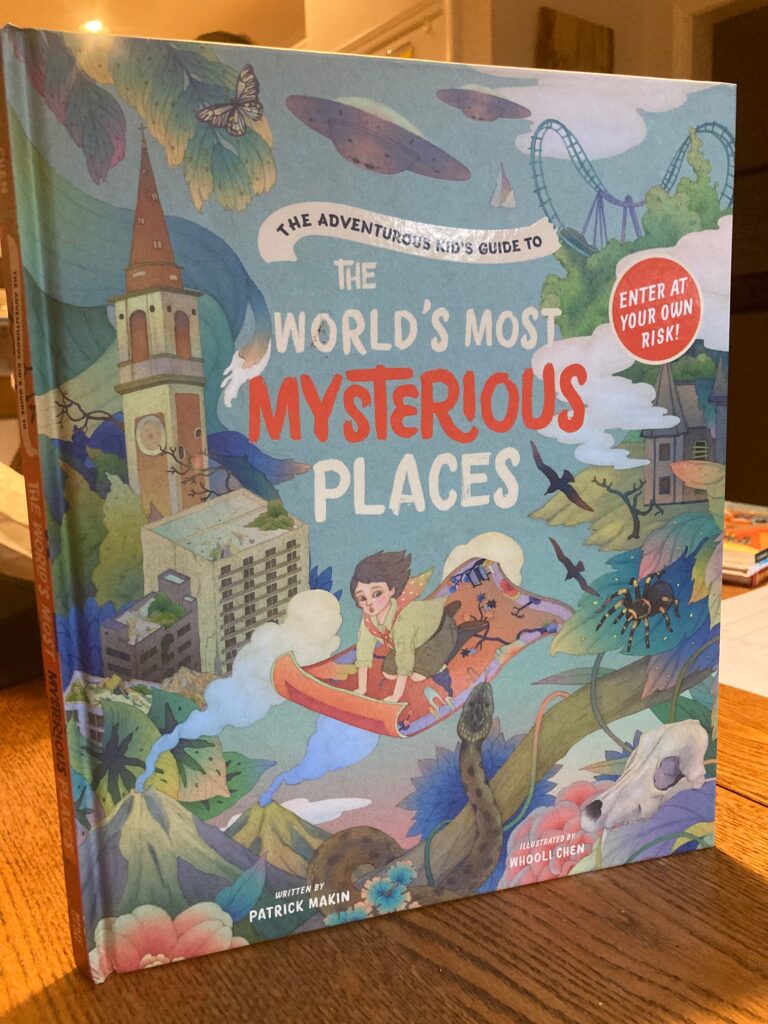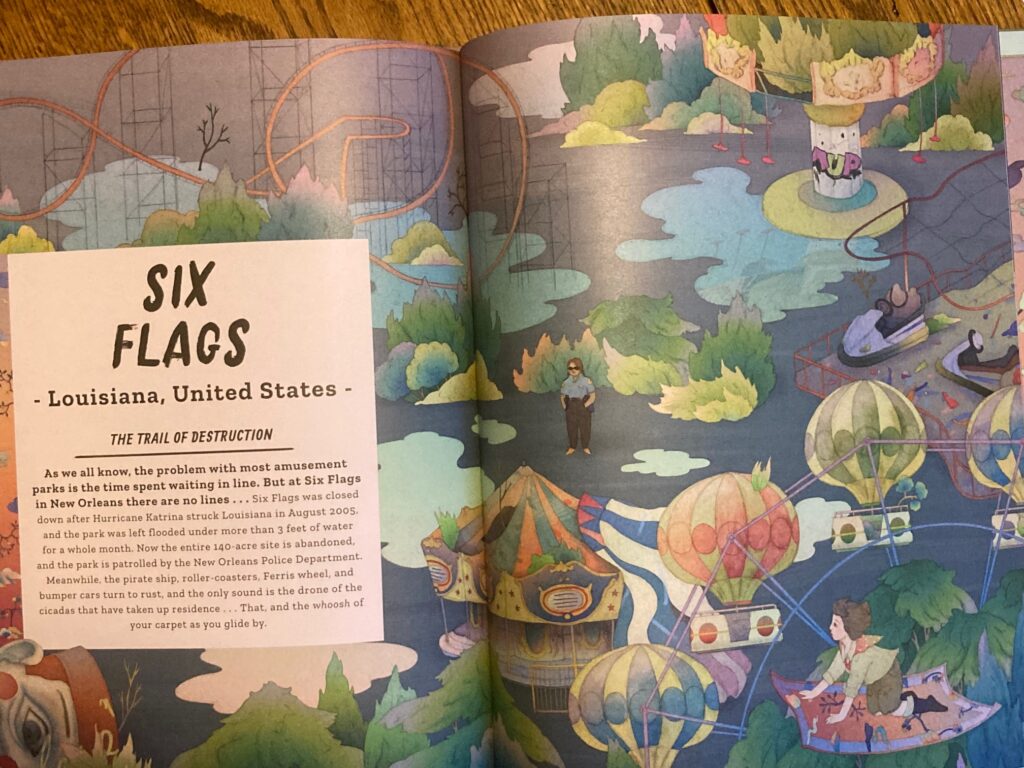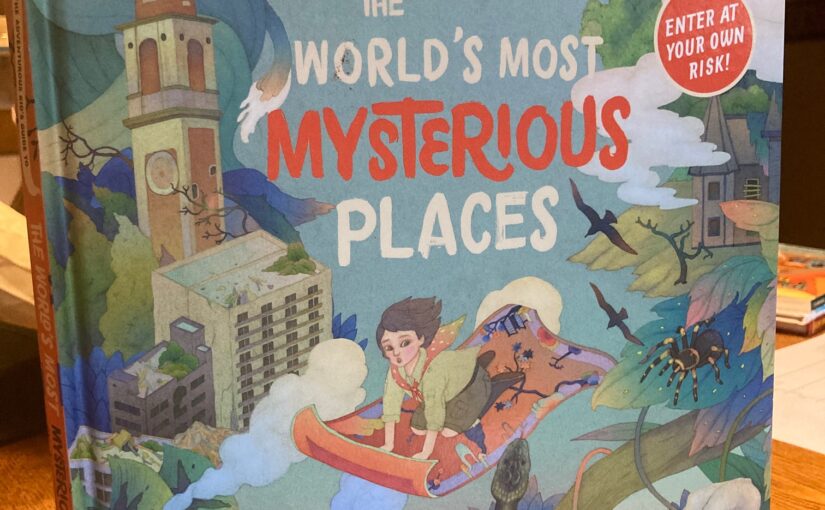The Adventurous Kid’s Guide to The World’s Most Mysterious Places is the literary equivalent to Youtube food. Those who hang around upper elementary through lower middle school students can relate to that metaphor. It’s those ages that are apt to start a sentence with “Did you know that…?” to which you’ll be regulated to something that’s questionable true, demonstrably false, fake news or a little-known fact that makes those ages stop, repeat it to their friends and then find more like that. The difference is that The Adventurous Kid’s Guide to The World’s Most Mysterious Places is 100% non-fiction. It’s an impossibly addictive, oversized illustrated book that examines 19 places that exist, or have existed and lets fourth through sixth-grade student know why they should be interested in them.

These are the mysteries that reside in the National Treasure screenplay that was never produced. It’s the rumors of a room that’s entirely made out of gold. However, in the context of how your 11-year-old would present it sounding like, “did you know that there’s a room made entirely out of amber?” This is where those same ages can practice their critical thinking skills, especially when it comes to questioning stories that are partially told to them. It’s also a time when those ages can learn the new concept of, context, as well as, amber, unless they’ve seen Jurassic Park.

Yes, The Amber Room did exist at one time. It was a room given to Peter the Great of Russia in 1716, installed in the Catherine Palace in 1755, and looted by the Nazis during WWII. The amber panels were boxed up and put on a boat for Germany, where their location abruptly ended. Did the ship sink? Was it simply hidden to an inordinate degree in the Soviet Union? It’s probably at the bottom of the ocean, but this book will introduce, and clear up the status of something curious and fascinating that those ages are thinking about.
There’s an island where humans are prohibited from going ashore. The tomb of Genghis Khan, and its untold amount of historical treasure, has never been found. An island off of the coast of Italy is home to where hundreds of thousands of people who had the plague in the late 1700s were sent to live-and die. Poveglia is supposedly haunted and is now overgrown with over half a century of unchecked vegetation growth, but it’s also for sale by the Italian government.
Kids will not be able to read just one page of this book. It gloriously fails the cat video and potato chip test. Due to its oversized format the illustrations provide a great canvas for the eyes of those young, reluctant readers to wander and become curious. Is there a section on UFOs or aliens in the secret archives of the Vatican? What does the queen’s bedroom really look like?
The book sets up all of the areas by introducing a young girl who is going to explore them on her flying carpet. There is also a nice disclaimer on that page warning any erstwhile travelers who might try to visit these places that they should not, but that if they do, the authors or publishers don’t accept any liability whatsoever. Some of the places merit that mention because of their unsafe or dangerous conditions, like Six Flags in New Orleans, while others are in there due to their impossibility, like the Svalbard Global Seed Vault in Norway.
You’re curious about the book and what other places are in The World’s Most Mysterious Places. It’s difficult not to be curious about them, and you might be an adult. Now, put the book in front of a nine-year-old and watch them get sucked into it. That same vortex will happen to young readers, but the vocabulary and nature of its presentation will make it the most approachable to those who are subject to the whims and trivia of paragraph trivia. However, for that Nat Geo Kids demographic, this is the illustrated sort of magic that will introduce them to non-fiction nuggets that are the real deal.
The Adventurous Kid’s Guide to The World’s Most Mysterious Places is by Patrick Makin with illustrations by Whooli Chen and is available on Magic Cat Publishing, an imprint of Abrams Books.
There are affiliate links in this post.





 Facebook
Facebook Twitter
Twitter Flickr
Flickr GooglePlus
GooglePlus Youtube
Youtube